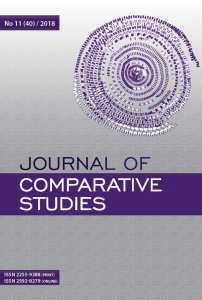On Functional-Typological Plot of “Little Red Riding Hood” in European and Armenian Contexts
On Functional-Typological Plot of “Little Red Riding Hood” in European and Armenian Contexts
Author(s): Tigran Simyan, Albert MakaryanSubject(s): Language and Literature Studies, Studies of Literature, Other Language Literature, Theory of Literature
Published by: Daugavpils Universitātes Akadēmiskais apgāds “Saule”
Keywords: literary fairy tale; fairy tale typology; fairy tale text transformation; function; motif; motifeme;
Summary/Abstract: The article takes into theoretical findings by Vladimir Propp, Alan Dundes, Yuri Lotman, as well as considers the material in a semiotic and typological key. In typological terms, the motifeme (Kenneth Pike’s term) is the “divergence” between the primary European “invariants” (Perrault, the Brothers Grimm), as well as, their transpositions, “emanations” in Armenian translations and transpositions. The motifeme and typological analysis of the empirical material showed that the version of “Little Red Riding Hood” by Perrault was addressed to the adult recipient while the version of the same tale by the Brothers Grimm is addressed to the children. Recipients and cultural context (Enlightenment, Romanticism) played an important role in the processing of folklore material. The motifeme and functions of the fairy tale played a significant role in the construction of the authorís narration. Functional (or motiphemic) and typological analysis of texts shows that both the version of Perrault and that of the Brothers Grimm have many motifemes taken from the fairy tale. However, the textological difference between the tales lies in the fact that high didacticism and the presentation of cognitive motifeme in the version of the Brothers Grimm indicate a relatively high authorial interference into the language of the narration of the fairy tale. In the nineteenth century West Armenian Literature, the theme of “Little Red Riding Hood” was touched upon twice. In 1861, Ambrosius Kalfayan published in Paris not the translation but the retelling of the fairy tale of “Little Red Riding Hood”. If the translation was in some sense a “tracing-paper” of the primary text (Perrault), then, in comparison with the ìliteralî translation, the “retelling” of the plot moved the correlated text much more further from the European “primary sources”. The author of the second version of the plot of “Little Red Riding Hood” was the Armenian satirist Hakob Paronyan (1843–1891), who published the text under the title “Red Rose” (1876), which is actually the hybrid version of European “primary” texts. Typological analysis has shown that for the Armenian versions the version of Perrault is the one that has mostly played the role of the primary source, as in the nineteenth century West Armenian writers were mostly French speaking, and for this reason the reception of French literature is more apparent.
Journal: Komparatīvistikas almanahs
- Issue Year: 2018
- Issue No: 11(40)
- Page Range: 42-60
- Page Count: 19
- Language: English

